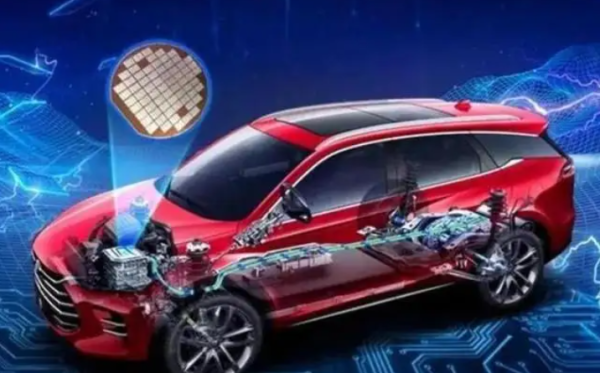According to MFMIC reported on May 12“In the automotive industry, as many chip suppliers focus on more popular products such as smart phones during the epidemic, the supply of chips in the automotive industry is insufficient and the automotive production capacity is restrained.”

Many automotive enterprises such as Volkswagen, Ford and Toyota have to reduce production to deal with the crisis. The global shortage of chips is becoming more and more serious, the automotive industry is affected, and the mobile phone industry is also affected, The prosperity of the semiconductor industry continued to rise. Partly because of the epidemic, the factory stopped running, the production capacity decreased and the chips were out of stock. Subsequently, the new crown spread all over the world, and the problem of chip shortage became more serious. The epidemic began to spread all over the world, resulting in a sharp increase in the demand for PCs, cameras, keyboards, displays and tablets. In addition, 5g has further boosted demand, and the demand of smart phone industry has almost returned to the level before the pandemic.
Uncertain factors such as global epidemic prevention and control policies, insufficient momentum for world economic recovery, and the situation in Russia and Ukraine have caused the growth of consumer electronics to show signs of slowing down. For a time, industries that rely on consumer electronics as the main growth driver have also begun to think about how to maintain the pace of development in the "post-smartphone era". Once, CIS (CMOS image sensor) for mobile phone cameras took advantage of the multi-camera trend and created a golden decade of continuous growth from 2009 to 2019. And the variables of the mobile phone market also make the industry turn to pay attention to the development potential of vehicle CIS. Can the automotive market become the second growth pole of CIS?
Intelligent driving injects kinetic energy
Since 2021, as the terminal market returns to rationality and production capacity is squeezed by other applications, the growth pace of mobile CIS has also begun to stagnate. According to Sigmaintell's data, the global mobile phone CIS shipments in 2021 will be approximately 5.37 billion units, a year-on-year decrease of approximately 11.8%. In the first quarter of 2022, the situation in Russia and Ukraine and global inflationary pressures have led to rumors that terminal manufacturers such as mobile phones, laptops, and TVs have lowered orders in the supply chain. TrendForce research shows that the epidemic situation and the imbalance of wafer production capacity have not yet eased significantly. In addition, the international situation, inflation, energy shortage and other factors will bring more variables to the smartphone market in 2022. It is not ruled out that the total production volume will continue to be lowered for the whole year. quantity.The sluggish consumer market has drawn more attention to the growth potential of automotive CIS. According to Frost & Sullivan statistics, in 2020, the shipments and sales of CIS in the automotive electronics field will be 400 million and 2.02 billion, respectively, accounting for 5.2% and 11.3% of the total global CIS shipments and sales; The shipment and sales of electronic CMOS image sensors will reach 950 million and 5.33 billion US dollars in 2025, and the market share will rise to 8.2% and 16.1%, respectively, and the expected compound annual growth rate will reach 18.89% and 21.42%-sitemap
Intelligent driving is the main growth driver of automotive CIS. Similar to the growth mechanism of high-end mobile phones with multiple cameras, the higher the level of auto-driving, the more CISs a single vehicle can carry.

Wang Yi, founder and CEO of Maimus Consulting, pointed out to a reporter from China Electronics News that at present, CIS is mainly used in ADAS (advanced driver assistance systems) and reversing images from L1 to L2 levels. the average CIS usage per car is about 2.7, and it is expected that by 2027, this number will rise to 4.8. However, the usage of CIS in high-end cars is very high, usually more than 10 pieces. The amount of CIS used in L4 level and above autonomous vehicles will exceed 20.
"Typical use cases of automotive CIS include front-view, side-view, rear-view, and surround-view camera systems, driver monitoring systems and occupant monitoring systems, electronic rear-view mirrors, etc. ADAS front-view cameras are mainly used to achieve L2 level and above vehicles. Features such as automatic emergency braking and lane keeping assist. Next, side view and rear view cameras, and in-car cameras will become just-in-demand - not only user demand is rising, but regulators are also joining in, all of which accelerate CIS-centric The application of cameras in the car penetrates." Wang Yi said.
If intelligent driving has promoted the increase in volume, the heavy requirements of automobiles for safety have driven the increase in the average price of CIS.
Xu Jingjing, senior analyst of Sigmaintell's innovation business department, told reporters that security requirements and algorithm upgrades have prompted the upgrade of automotive CIS pixel specifications, which in turn will increase the average unit price of CIS. Sigmaintell forecasts that the global sales of automotive front-mounted CIS is expected to reach US$1.63 billion in 2022, and will exceed US$2.9 billion by 2026.
And domestic enterprises have also felt the vigorous rise of CIS volume and price. The domestic CIS supplier Well shares said in the recent survey of the reception organization that the current global smart car industry is in a period of rapid development. With more than 10 pieces, the company's vehicle-mounted CIS will usher in an opportunity for both volume and price to rise.
"For the company, in the near future, automobiles will become the second largest business market after mobile phones." Weil shares said.The technical threshold should not be underestimated
Compared with the CIS used for altera and xilinx consumer terminals, the CIS for automobiles should not only see more clearly, but also be stable and safe.
"In the construction of an intelligent driving system, in-vehicle CIS as the 'eye of intelligent driving' is an essential basic sensing device, so the intelligence of image sensors is also the future development direction. We are also further developing with machine learning in the automotive market. Closely integrated, gradually covering the application needs of smart car customers in different scenarios, empowering the smart car industry." Shao Ke, vice president of Smartway's automotive chip department, pointed out to a reporter from China Electronics News.
At the hardware architecture level, the introduction of ISP and DRAM enables CIS to output higher-quality images, making the "eye of intelligent driving" brighter. Sony has launched a three-layer stacked CIS, which integrates CIS, ISP, and DRAM. SmartVision has also successfully mass-produced vehicle-grade CIS with integrated ISP two-in-one function. In the future, there will be more in-vehicle products with deep integration of "algorithm + chip".
"The introduction of ISP into the image sensor can process the color, clarity and noise of the image and output high-quality images, thereby enhancing the perception ability and detail control of the vehicle vision system on the surrounding environment, so that the intelligent driving system can make further improvements. decision-making to help improve the safety of intelligent driving." Shao Ke said.
At the level of algorithm technology, the vehicle CIS needs to identify and process the image, optimize the clarity and fineness, and realize the effective identification of environmental information and reliable imaging in various environments such as night vision and tunnels.
Shao Ke said that intelligent driving pays more attention to the high dynamic range of imaging, low-light imaging capability and LED flicker suppression. SmartVision's innovative HDR technology enables in-vehicle CIS to calmly respond to changes in light inside and outside the car, helping intelligent driving develop to a higher level. At the same time, based on the LED flicker suppression technology, it can provide clear and delicate images without LED flicker, help the intelligent driving system to effectively identify the LED traffic lights, thereby improving the safety of the artificial intelligence assisted driving system.
Wang Yi also said that the dynamic range of CIS in tunnel scenes is extremely demanding, generally above 100dB. At the same time, high-end automotive CIS needs to accurately identify traffic light signals, and has strict requirements for LED flicker suppression technology. In addition, the frame rate, quantum efficiency and adaptability of the whole scene of CIS are also important parameters.The high-end field is in urgent need of breakthroughDespite the unfavorable factors such as the epidemic and lack of cores, my country's automobile production and sales will complete 26.082 million and 26.275 million respectively in 2021, maintaining the world's largest automobile production and sales for 13 consecutive years, and also for CIS and other automotive semiconductor components. However, compared with leading manufacturers, domestic CIS enterprises still need to promote the high-endization of resource elements such as technology, manufacturing, and talent reserves, and enhance market competitiveness and industry voice.
"At present, the market potential and value of my country's automobile industry are still huge. This makes my country an important consumer of CIS for automobiles in the world. The huge market demand is conducive to domestic enterprises to seize the opportunity to realize independent research and development strategies. At the same time, the upstream and downstream of the industrial chain Close cooperation will also help to develop new products and applications, and catch up with the international CIS manufacturers." Wang Yi said, "Compared with the world's leading CIS manufacturers, my country is relatively backward in high-end products, and it is urgent to improve the manufacturing process and technology. Technological improvement in the design field.”
Xu Jingjing said that the domestic development of automotive CIS, on the one hand, should continue to optimize the technical indicators, including the upgrade of pixel specifications and resolution, as well as the improvement of CIS's photosensitive ability and wide dynamic range. On the other hand, it is necessary to focus on the improvement of the overall strength of the industrial chain.
"With the support of relevant preferential policies and the gradual improvement of the automotive upstream and downstream industry chain, automotive CIS companies should continue to deploy high-end diversified product routes, cooperate with universities to introduce high-tech talents, and gradually improve their R&D and design capabilities." Xu Jingjing said, "At the same time, it should be noted that there is a certain gap between domestic companies and overseas companies in terms of upstream wafer foundry capacity and process technology. It is necessary to rationally deploy production capacity in advance and diversify supply chain risks."
Article From: https://www.mfmic.com/blog/cmos-image-sensors-in-2022.html
Media Contact
Company Name: MFMIC Technology Company Limited
Email: Send Email
Phone: 83741556
Address:Rm 602, 6/F, Wayson Comm Bldg, 28 Connaught West
Country: HongKong
Website: https://www.mfmic.com/














